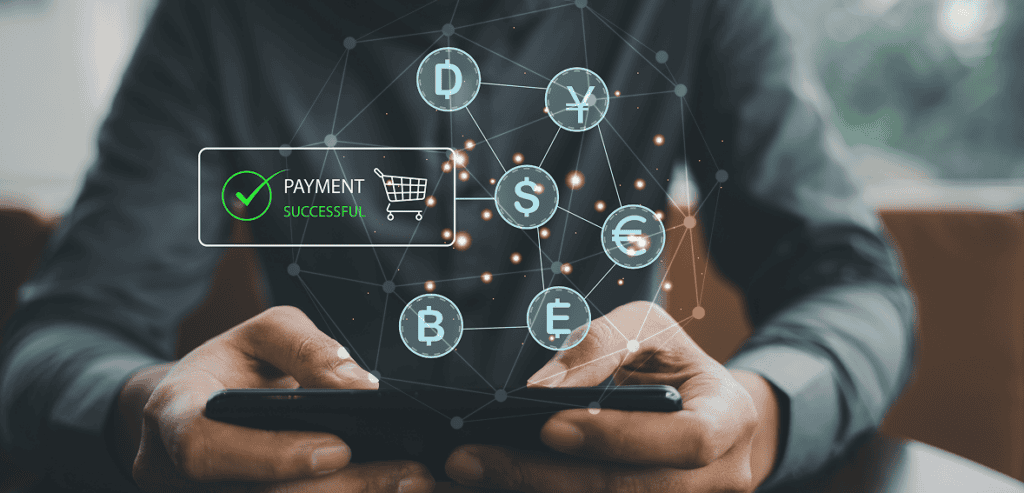
By Bethany Johnson February 21, 2025
The way we pay for goods and services has transformed dramatically in recent years. From cash and checks to digital wallets and cryptocurrency, payment processing is evolving at a rapid pace. One of the most significant advancements has been the expansion of digital transactions and Electronic Benefits Transfer (EBT) systems. As technology continues to progress, businesses, consumers, and financial institutions must adapt to these new payment landscapes.
This article explores the future of payment processing, focusing on trends in EBT and digital transactions. We will discuss the latest innovations, challenges, and what businesses need to prepare for in the coming years.
The Shift Toward Digital Transactions
As technology advances, the way consumers and businesses handle transactions continues to evolve. The growing reliance on digital solutions has created a need for secure, efficient, and user-friendly payment methods. Companies are investing in innovative technologies to streamline transactions, reduce fraud, and improve customer experiences.
The Rise of Cashless Payments
The decline of cash payments is evident worldwide. With increased access to digital banking, credit cards, and mobile wallets, fewer consumers rely on physical currency. Governments and businesses are also encouraging cashless payments due to their efficiency and security. The COVID-19 pandemic accelerated this trend, as contactless payments became a safer and more convenient option.
The Role of Mobile Wallets
Mobile wallets such as Apple Pay, Google Pay, and Samsung Pay have gained immense popularity. These wallets store payment card information securely and enable users to make transactions with a simple tap. Their convenience, security, and integration with loyalty programs have made them a preferred choice for many consumers.
Contactless Payment Innovations
Near Field Communication (NFC) and QR code payments have become standard for quick, secure transactions. Many businesses now accept these forms of payment, making it easier for customers to complete purchases without physical interaction. Contactless payment technology is also expanding beyond smartphones to wearables, including smartwatches and fitness bands.
The Evolution of EBT Payments
As digital payment methods continue to evolve, EBT systems are also undergoing significant transformations to enhance accessibility and security. These advancements aim to ensure that recipients of government assistance programs can seamlessly integrate into the digital economy without facing financial or technological barriers.
What is EBT?
Electronic Benefits Transfer (EBT) is a system that allows recipients of government assistance programs, such as the Supplemental Nutrition Assistance Program (SNAP) and Women, Infants, and Children (WIC), to access benefits digitally. Instead of paper vouchers, beneficiaries receive a debit-like card to purchase eligible items.
Modernizing EBT Transactions

EBT systems are undergoing significant upgrades to enhance user experience and security. Newer systems integrate mobile access, allowing beneficiaries to check balances, track spending, and receive notifications on their smartphones. Additionally, retailers are adopting EBT-friendly payment processing technology to improve accessibility.
Online EBT Transactions
A major development in EBT payments is the ability to shop online using SNAP benefits. Major retailers like Walmart and Amazon now accept EBT payments for grocery deliveries and curbside pickup. This trend is expected to expand, offering greater convenience to recipients, especially those in underserved areas with limited grocery access.
The Intersection of Digital Transactions and EBT
As digital payments and EBT systems continue to evolve, their intersection presents new opportunities for innovation and efficiency. The integration of digital payment methods with government assistance programs can improve accessibility, reduce stigma, and provide greater flexibility for beneficiaries. By embracing modern financial technologies, EBT transactions can be made more seamless and widely accepted, helping bridge the gap between traditional benefits programs and the digital economy.
Integration with Mobile Payments
With the rise of digital payments, there is growing interest in linking EBT benefits with mobile wallets. This would enable beneficiaries to use contactless payments at retail locations that support digital transactions, making EBT payments more seamless and accessible.
Blockchain and EBT Security
Blockchain technology has the potential to revolutionize EBT transactions by increasing transparency, reducing fraud, and ensuring faster processing. Governments and financial institutions are exploring ways to implement blockchain solutions to secure benefit distribution while maintaining accountability.
AI and Fraud Prevention in EBT
Artificial intelligence (AI) is playing a crucial role in detecting fraudulent EBT transactions. Machine learning algorithms can analyze spending patterns and flag suspicious activities, helping agencies prevent abuse while ensuring genuine beneficiaries receive their benefits efficiently.
Emerging Trends in Payment Processing

As the financial landscape continues to evolve, emerging trends in payment processing are redefining how transactions are conducted. From the rise of digital currencies to biometric authentication, businesses and consumers alike must stay informed about these changes to remain competitive and secure in the modern economy.
Cryptocurrency and Digital Currencies
Cryptocurrency adoption is growing, with many businesses and consumers showing interest in Bitcoin, Ethereum, and stablecoins. While mainstream adoption remains a challenge, central banks worldwide are exploring Central Bank Digital Currencies (CBDCs) as a more regulated form of digital currency.
Biometric Payments
Biometric authentication methods, such as fingerprint scans, facial recognition, and voice recognition, are becoming more common in payment processing. These technologies enhance security and eliminate the need for physical cards or passwords, making transactions faster and safer.
Open Banking and API Integration
Open banking allows third-party financial service providers to access consumer banking information securely via APIs (Application Programming Interfaces). This trend is revolutionizing digital payments by enabling seamless transfers, improved financial management, and personalized services for consumers.
Challenges in the Future of Payment Processing
Security and Fraud Risks
As digital payments become the norm, cybercriminals continue to develop new tactics to exploit vulnerabilities. Businesses and financial institutions must invest in advanced cybersecurity measures, including encryption, tokenization, and multi-factor authentication, to protect user data.
Accessibility and Inclusion
While digital transactions are convenient, not everyone has access to the necessary technology or banking services. Ensuring inclusivity in payment processing requires initiatives such as government-backed digital wallets and expanded EBT access to online and mobile transactions.
Regulatory and Compliance Issues
Governments and financial regulators are constantly updating policies to keep up with technological advancements. Businesses must stay compliant with evolving regulations related to data privacy, anti-money laundering (AML), and consumer protection to avoid legal issues.
The Future of EBT and Digital Transactions
As digital payments continue to gain traction, the future of EBT and digital transactions is expected to be shaped by enhanced security, accessibility, and technological integration. With an increasing number of consumers relying on digital payment methods, it is imperative for both public and private sectors to work collaboratively to ensure that all payment systems, including EBT, evolve in a way that meets the needs of modern users while maintaining reliability and security.
The Role of AI and Machine Learning
AI-driven payment processing solutions will continue to improve transaction security, enhance fraud detection, and personalize customer experiences. Businesses leveraging AI will gain a competitive edge by offering seamless, efficient, and secure payment options.
Expanding Digital Inclusion
Efforts to bridge the digital divide will be crucial in the future of payment processing. Financial institutions and governments must work together to provide digital literacy programs, affordable banking solutions, and innovative payment technologies that cater to all demographics.
The Growth of Super Apps
Super apps, such as WeChat and Paytm, are transforming the payment ecosystem by integrating multiple financial services into a single platform. These apps offer banking, shopping, bill payments, and financial management tools in one place, making them a powerful trend to watch in the coming years.
Conclusion
The future of payment processing is rapidly evolving, driven by technological advancements and changing consumer preferences. Digital transactions, EBT modernization, and emerging payment trends are reshaping the financial landscape. Businesses must stay ahead of these developments to remain competitive and provide seamless, secure payment experiences for their customers.
As digital payment adoption continues to grow, inclusivity and security will be key priorities. Whether through mobile wallets, biometric authentication, blockchain technology, or AI-driven fraud prevention, the next decade promises significant transformations in the way we conduct transactions. The businesses and consumers that embrace these changes will benefit from a more efficient, accessible, and secure financial ecosystem.